Learn how to make authentic Nyonya Jiu Hu Char
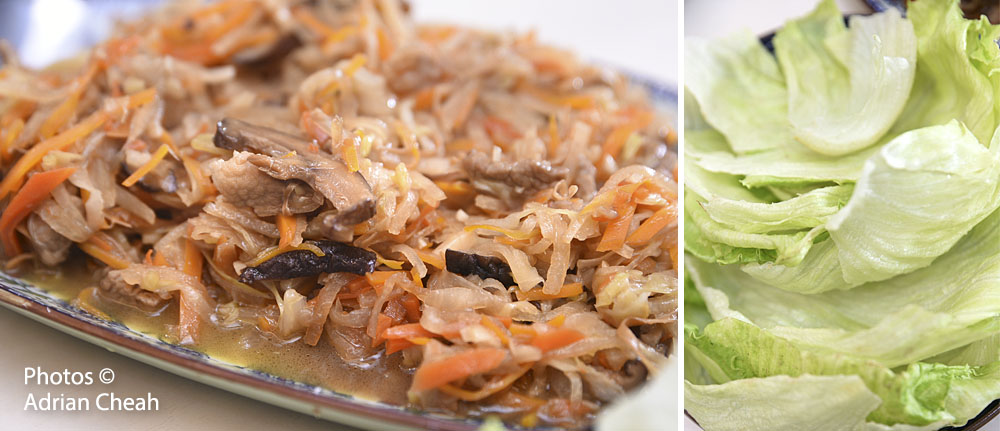
“Jiu hu” is Hokkien for “cuttlefish” and “char” means “fry”. Thus, Jiu Hu Char means “fried cuttlefish”. Although the shredded cuttlefish is the star ingredient (providing a potent umami flavour), there is more in that dish than just cuttlefish. The ingredients for this popular Nyonya offering consist of jiu hu si (dried shredded cuttlefish), yambean, carrots, cabbage, pork belly, mushrooms, onions and garlic.
Yambean plays an important role in Jiu Hu Char. The flavour of raw yambean is sweet and crisp, just like an Asian pear. In Penang, yambean is locally known as bangkwang, also called sengkuang (in Malay) and jicama (in Spanish). It is cooked with other ingredients to make the fillings for popiah and kuih pie tee as well as eaten raw in rojak (a local fruit salad). When I was young, the rojakman would cut a slice of yambeam and secure a ‘V’ shaped lidi (coconut leaf) stick at the bottom for holding. On the top, he would apply a generous helping of rojak sauce, dusting it over with crushed peanuts and belacan powder. It was a delicious and cheap treat that is quite difficult to come across nowadays.
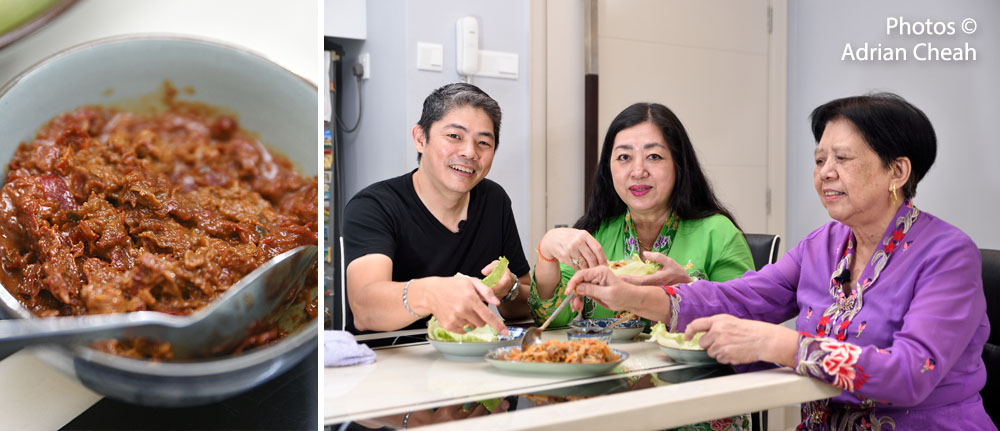
Although Jiu Hu Char is easy to cook, the preparation demands patience and time. To achieve better texture in the dish, the yambean should best be julienned by hand. Using a mandolin to complete the task will result in a soggy finish. Carrots should also be julienned thinly as well as cabbage, onions and mushrooms. The recipe below is from Lily Oh (in the purple kebaya), a good friend of Mum’s and a member of the State Chinese (Penang) Association. Lily would keep the water from the soaked mushrooms to further enhance the flavour of the dish. She would also recommend that the dried cuttlefish strips be soaked overnight to soften them. I find that adding half a teaspoon of baking soda when soaking helps to further tenderise them (especially if the strips are thick). The pork belly for this dish should contain a large portion of fat. Mum would blanch the pork belly first, making it easier to cut.
Remember to use a wok to accommodate everything if you are cooking a large batch. This will minimise spillage when cooking. As yambean is rather hard, allow some time for the vegetables to simmer till soft on low heat. When necessary, add water and cover the wok with a lit. This dish tastes even better overnight and after multiple reheating as flavours continue to develop. It also freezes well. So cooking a big batch is always a good thing. Any extra can be used for the filling for fried popiah (spring rolls) or be sandwiched between soft montau buns.
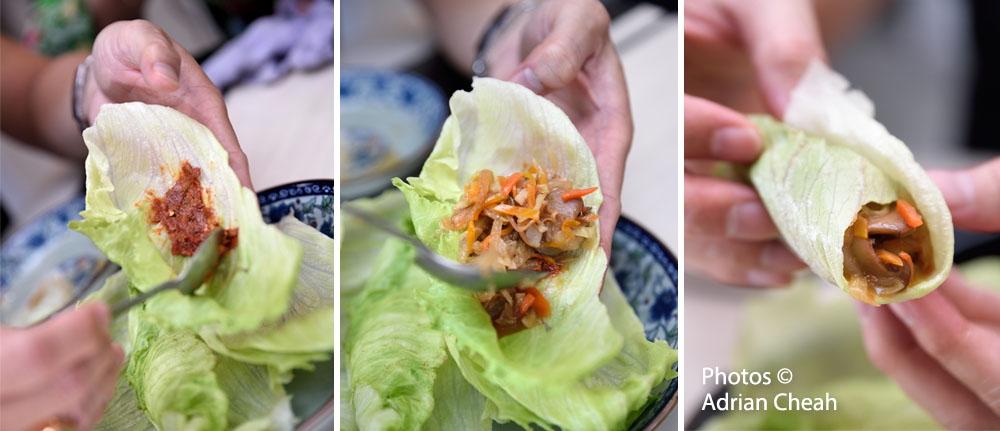
In Penang, Jiu Hu Char is a popular dish and one of the must-order items at Nyonya restaurants. It is usually served as a side dish but it can also be served as a lettuce wrap appetizer for a multi-course dinner. The best way to enjoy Jiu Hu Char is with sambal belacan, wrapped with crispy lettuce into bite-size parcels. The spicy heat from the sambal complements the savoury vegetables well, making it quite an explosive combination of flavours.
Try the recipe below and cook up a batch to indulge.
Lily Oh’s Jiu Hu Char recipe
-------------------------------------
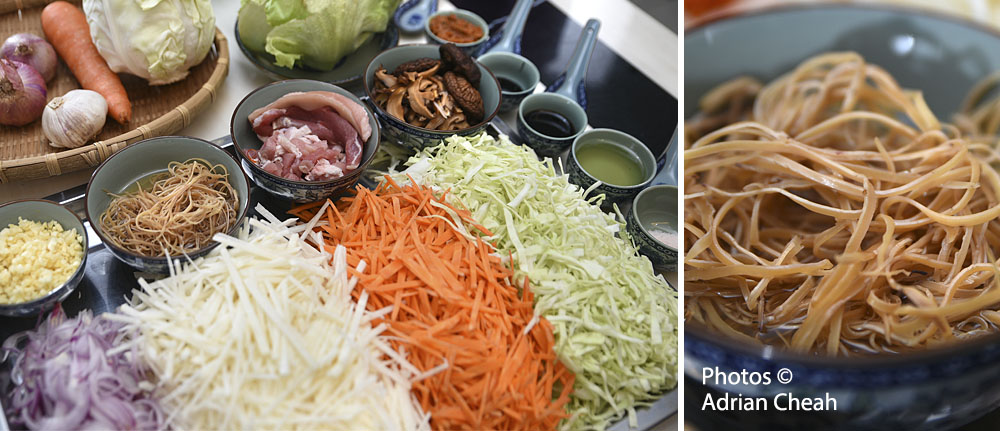
Ingredients:
- Bombay onions - 2 pieces (shred finely)
- Garlic - 1 clove (dice finely)
- Pork belly - 1 strip(cut into small pieces)
- Dried mushrooms - 10 pieces (Soak the mushrooms. Later cut them into thin strips. Keep the water you used for soaking the mushrooms for later use.)
- Jiu Hu Si (dried shredded cuttlefish) - 100g (soak till soft)
- Carrots - 100g (julienned)
- Cabbage - 80g (cut into thin strips)
- Yambean - 200g (julienned)
- Vegetable oil - 25ml
- Seasoning - dark soy sauce, light soy sauce, salt, white pepper powder and sugar
For serving:
- Lettuce - 150g
- Sambal belacan - 30g
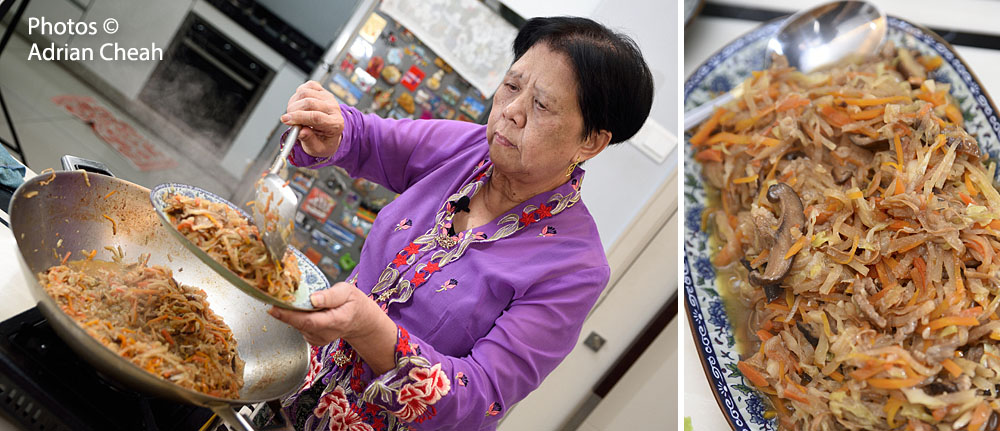
Method:
- Put some oil in the wok.
- Stir-fry onions and garlic till fragrant.
- Add pork belly.
- Put in mushrooms and shredded cuttlefish. Simmer a bit.
- Add cabbage and carrots. Simmer again.
- Add yambean.
- Add the water from the soaked mushrooms.
- Cover the wok with the lid and allow to simmer until the vegetables are soft.
- Season the dish with a pinch of salt, some white pepper powder, some dark soy sauce, light soy sauce and sugar to taste. Simmer further.
- Served the Jiu Hu Char with lettuce and sambal belacan.
Growing up, Jiu Hu Char was a dish that I watched Mum prepare and would help when I could, slicing the ingredients for this dish. Coming from a large family, Mum has to cook up a storm to feed the family. Now with a family of my own, I still cook this dish quite often. The flavours and aroma bring back vivid memories of my growing up years. To me, this comfort food is the taste of home.
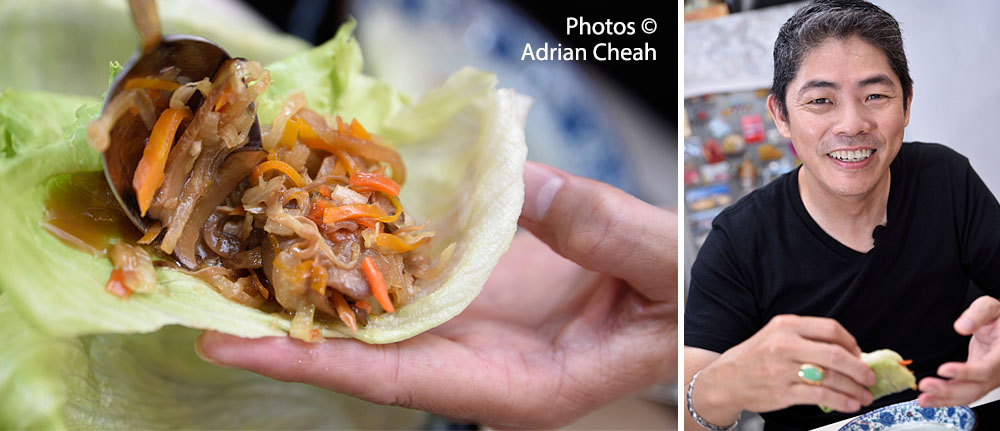
Lily’s method of cooking Jiu Hu Char differs from Mum’s. Mum would also use lard to cook this dish instead of common cooking oil. The pork belly fat and lard will boost the rich “lemakness” of the dish. Mum would pound garlic and taucheo (fermented beans) to form a fine paste. She would saute the paste with the pork belly, finely diced prawns and mushroom till fragrant before adding the vegetables. Another thing I noticed is that Lily adds the cuttlefish early in the cooking process whereas Mum would add them much later. Every household would have a different way of cooking the same dish and there is no one singular definitive recipe that reigns supreme. This is what makes cooking exciting. Discover what works for you and develop your own cooking practices. Happy cooking.
-------------------------------------
Written and photographed by Adrian Cheah
February 2020 © All rights reserved